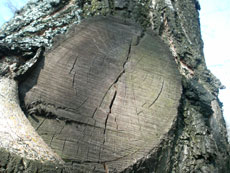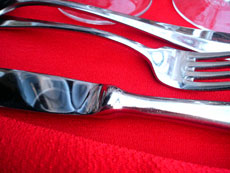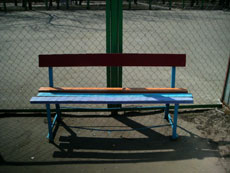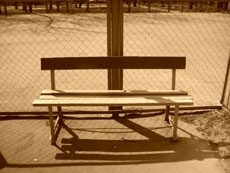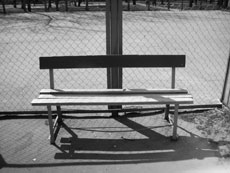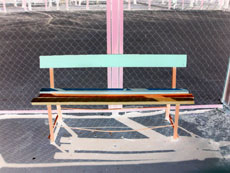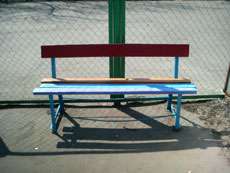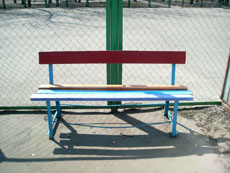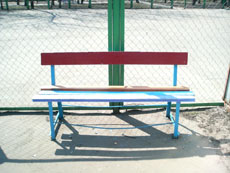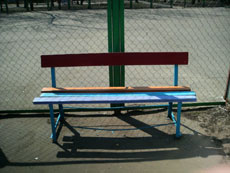|
|
Nokia N93 - 3.2 MP camera possibilities
Review GSM/UMTS-smartphone
Nokia N93>>>
One of the best things about Nokia N93 is undoubtedly its camera
module, which, in fact, makes the name for this handset. It’s not
a coincidence that the manufacturer has used “Next Story in Video”
slogan in the advertising campaign. Though one could rightfully
ask how come such inexpensive and thus available for the majority
of high-tech gadget lovers phone incorporates a camera showing off
not only high resolution of still images, but also TV quality video
recording capabilities. The answer turns out to be rather simple:
the N93 features several critical solutions, boosted the phone’s
both image taking and video recording capabilities Firstly, this
model has a new chipset by TI embedded in, namely TI2420, so that
it supports a 3D accelerator with rather average specifications.
Of course it appears average only against the background of several
models from NVidia’s very own GoForce series and ATI’s latest developments
(stand alone 3D accelerator). But having a good team of engineers,
specializing in this architecture and already familiar with TI solutions
at their disposal, in conjunction with low energy consumption of
the device, make these chipsets brilliant for mounting on a handset.
Time for creating new applications also is not of the minor importance
here. In the future this chipset is more likely to be carried by
majority of newly released smartphones, so Nokia will probably put
3D accelerators above everything else on their priority list. In
its turn, this means big leap for images quality and video processing
capabilities.. This chipset is capable of powering even 4-5 Mpix
cameras and basically one can see that on èñïîëüçóåòñÿ â Nokia 83,
which carries a 5 Mpix matrix.

Another feature, successfully materialized in the handset, is implementation
of serial optics. The trend for miniaturization of digital cameras
over the past years, has led to achieving quite reasonable dimensions
of camera modules for bulky devices as well, such as the N93. The
very fact o 5 and 6 Mpix cameras domination over the market puts
into question profitability of 3-4 Mpix modules production. At the
same time high demand coming from mobile market can prolong life
time of these technologies and cut their price even more. On the
other hand all manufacturers are vitally interested in including
outdated camera modules, because their price is consequentially
much lower than that on specially customized for mobile solutions
ones. So we’ve reached the point which implies that not always tiny
measurements make all the difference, as they can increase the final
price dramatically – price is what everything is about.
From theoretic preamble, we are moving on to reviewing its real
capabilities and construction. The lens is located on the rim, which
is common for a number of personal camcoders – some will remember
similar design found on Nokia N90. When the top half is unfolded
and twisted, the camera application is automatically called up.
In some ways, this method refers to video cameras, but more importantly,
users are already familiar with this system and thus it won’t repel.
The lens is sealed up with a firmly fastened plastic hood, so there
is no way it can accidentally fall off. Should you want it, you
can apply a tiny strap to the cover, so you will get rid of necessity
to look for a place to put the hood on. All in all the design looks
very solid and well-thought, adding to overall favorable impression.

The right rise features camera shortcut key. The trigger button,
marked with a red point, is originates from usual digital cameras,
as well as a ring rounding the key, which performs zooming. The
navigation key with OK button placed inside is located a bit lower
– it’s used for changing camera modes and browsing through the menus,
not in camera application. A special key activates the flash, though
since it’s only LED it can’t pretend to be a full-fledged one, like
those found on standard digital cameras. For instance, on Sony Ericsson
K800i the flash module has much more in common with digital cameras
– yet Nokia is planning on using pulse flash modules in the upcoming
handsets.

So it’s obvious that the camera itself originates from the range
of low-end digital cameras, and therefore should overcome them quality-wise.
Nonetheless, let us familiarize you with a short spec list:
- Carl Zeiss Optics: Vario-Tessar glass lens
- Matrix, 4.5õ5.5 ìì, CMOS, 3.2 megapixel (2048x1536)
- Shutter speed: Mechanical shutter: 1/2400~1/3 s
- Macro focus distance 30 cm (macro @ Wide) 10 cm (macro @ Middle
to Tele)
- Focus range 10 cm ~ infinity
- Focal length 4.5 mm (Wide) /12.4 mm (Tele) 34.25 - 94.1 mm(35mm
equiv.)
- Still image file format: JPEG/EXIF
- Auto focus
- White balance: automatic, sunny, cloudy, incandescent, fluorescent
- Exposure compensation: +1 ~ -1EV at 0.5 step
- Scene: automatic, user, close-up, landscape, night, night portray
- Color tone: normal, sepia, black & white, negative
- Zoom (optical/digital) 3x / up to 20x
Impressive? I believe that this is maximum what mobile phones will
be capable of today and in nearest future, there won’t be any more
settings. Before moving on to sample photos, I’d like to tell you
that viewfinder is displaying picture correctly, as is, without
any artifacts or any disturbances caused by rapid movements. Buttons
located on left side are used for accessing additional shooting
settings.
Video
showing how camera works (wmv, 24.1Mb)>>>
 |
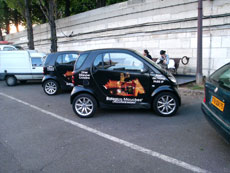 |
(+)
maximize, 2048x1536, JPEG |
(+)
maximize, 2048x1536, JPEG |
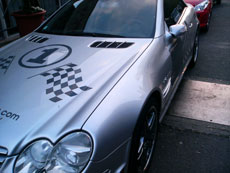 |
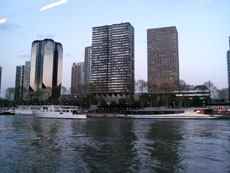 |
(+)
maximize, 2048x1536, JPEG |
(+)
maximize, 2048x1536, JPEG |
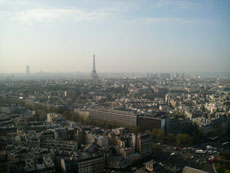 |
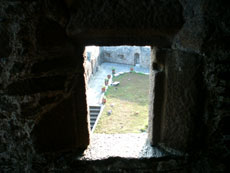 |
(+)
maximize, 2048x1536, JPEG |
(+)
maximize, 2048x1536, JPEG |
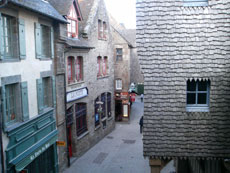 |
 |
(+)
maximize, 2048x1536, JPEG |
(+)
maximize, 2048x1536, JPEG |
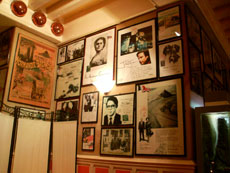 |
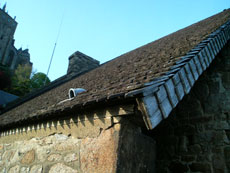 |
(+)
maximize, 2048x1536, JPEG |
(+)
maximize, 2048x1536, JPEG |
Optical Zoom. During shooting you can easily rotate
ring around shutter, it can be easily done with your thumb. Zoom
works similarly to digital cameras, you can see green line, it displays
how optical zoom is used right now. Zoom itself is very good, picture
remains sharp, there are no artifacts like ones you get when you
are using digital zoom, this is a great advantage for this handset.
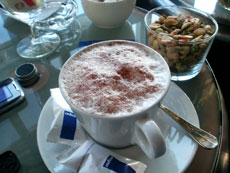 |
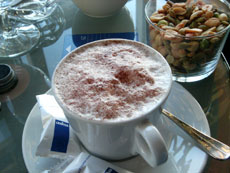 |
(+)
maximize, 2048x1536, JPEG |
(+)
maximize, 2048x1536, JPEG |
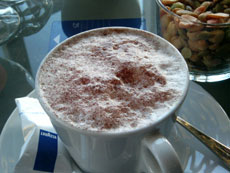 |
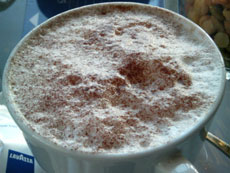 |
(+)
maximize, 2048x1536, JPEG |
(+)
maximize, 2048x1536, JPEG |
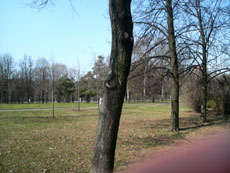 |
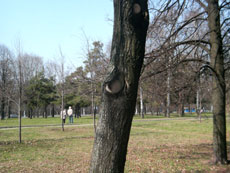 |
(+)
maximize, 2048x1536, JPEG |
(+)
maximize, 2048x1536, JPEG |
 |
 |
(+)
maximize, 2048x1536, JPEG |
(+)
maximize, 2048x1536, JPEG |
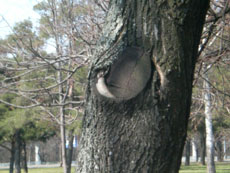 |
 |
(+)
maximize, 2048x1536, JPEG |
(+)
maximize, 2048x1536, JPEG |
Macro mode. Macro mode works good, and shots quality
is good too. Focusing is fine even at small details.
Various color modes. Considering fact that you
can make similar graphic effects in any simple graphic editor, there’s
no big reason to use these effects right on your phone.
WB. It’s not really correct to change it only
outdoors, however here are examples:
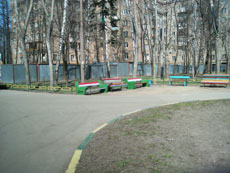 |
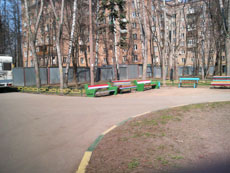 |
(+)
maximize, 2048x1536, JPEG |
(+)
maximize, 2048x1536, JPEG |
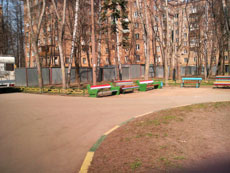 |
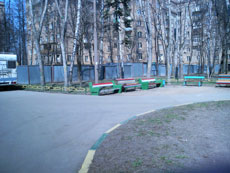 |
(+)
maximize, 2048x1536, JPEG |
(+)
maximize, 2048x1536, JPEG |
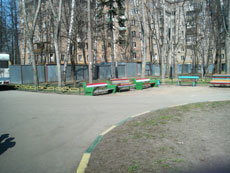 |
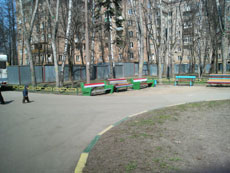 |
(+)
maximize, 2048x1536, JPEG |
(+)
maximize, 2048x1536, JPEG |
Exposure Correction. One step is 0.5, this function
is useful for making photos of objects that have a lot of light
or green color.
Night Mode. I’d like to point out that presence
of light diode flash does not help at night, it’s more of a default
requirement, nothing more. But due to qualitative lens, some photos
made at night, including ones with moving objects (steamboat) remain
good quality.
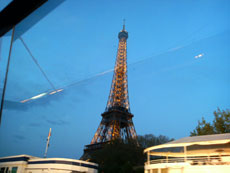 |
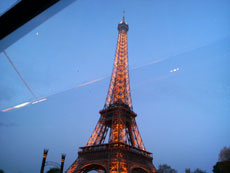 |
(+)
maximize, 2048x1536, JPEG |
(+)
maximize, 2048x1536, JPEG |
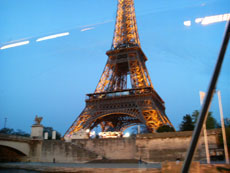 |
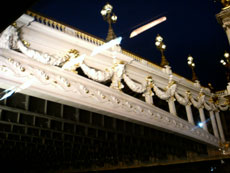 |
(+)
maximize, 2048x1536, JPEG |
(+)
maximize, 2048x1536, JPEG |
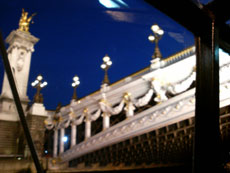 |
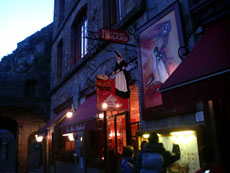 |
(+)
maximize, 2048x1536, JPEG |
(+)
maximize, 2048x1536, JPEG |
 |
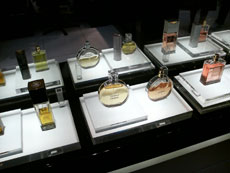 |
(+)
maximize, 2048x1536, JPEG |
(+)
maximize, 2048x1536, JPEG |
Comparing photos made with Nokia N93, Nokia N80, Sony Ericsson
K790i
There are not that many solutions that not only provide 3mpx size
of photos, but also have decent specifications. Nokia N80 was called
to see changes between mass models from Nokia, this means showing
why Nokia N93 is just way better. At same time Sony Ericsson K790i
claims to be best photographic device in class of mobile phones.
You can compare photos of these devices made at same time with minimal
delay (1-2 seconds). All settings were automatic, this is standard
scenario for most users (point and shoot).
 |
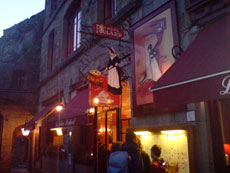 |
N93
- (+) maximize, 2048x1536, JPEG |
K790
- (+) maximize, 2048x1536, JPEG |
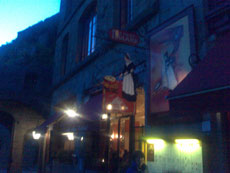 |
|
N80
- (+) maximize, 2048x1536, JPEG |
|
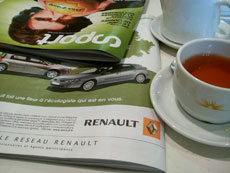 |
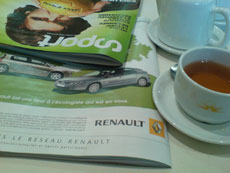 |
N93
- (+) maximize, 2048x1536, JPEG |
K790
- (+) maximize, 2048x1536, JPEG |
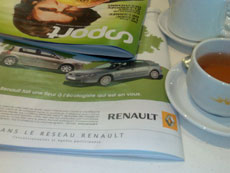 |
|
N80
- (+) maximize, 2048x1536, JPEG |
|
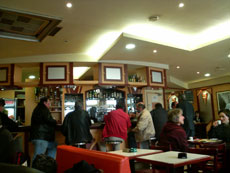 |
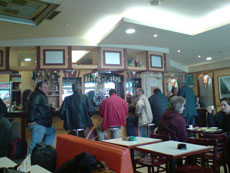 |
N93
- (+) maximize, 2048x1536, JPEG |
K790
- (+) maximize, 2048x1536, JPEG |
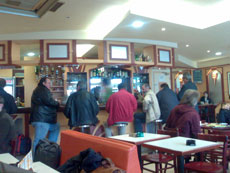 |
|
N80
- (+) maximize, 2048x1536, JPEG |
|
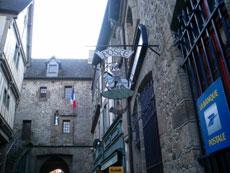 |
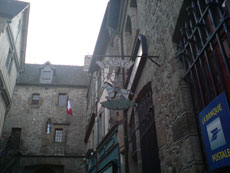 |
N93
- (+) maximize, 2048x1536, JPEG |
K790
- (+) maximize, 2048x1536, JPEG |
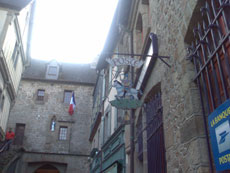 |
|
N80
- (+) maximize, 2048x1536, JPEG |
|
Video
Handset is capable of recording video in several quality modes,
maximal one assumes 30 fps @ 640x480 (VGA) resolution. You can downgrade
frame rate to 15 or decrease resolution. Format in which video is
recorded – mpeg4, simultaneous sound recording is supported too
(two channels, AAC, 48khz). There are two mics on case, each has
index (R or L, which stands for Right and Left). By default video
is saved on memory card; however you can use internal memory too,
but it’s enough only for one minute and some seconds. Maximal length
is 60 minutes. During shooting you can use optical or digital zoom
(x8 in this mode). Optical stabilizer is used during shooting, this
allows preventing small shaking of handset. I got the impression
that this feature works fine, you do not feel shaking feeling that
you might get when you shoot the video for quite a while. You can
disable sound in case you do not need it.
There’s also White Balance settings, as well as various color effects,
just like in camera. Scene selection is limited by two: Auto and
Night Mode.
Here are samples of video clips recorded with Nokia N93 in maximal
resolution, they are really good for a mobile device and can be
considered as best there are on today’s market. There won’t be any
competitive device in this section for 3-4 months to say the least.
This is why Nokia N93 will be extremely interesting product for
those who are looking for such solution and use video recording.
Video
sample 1 (mp4, 12.3 Mb)>>>
Video
sample 2 (mp4, 9.55 Mb)>>>
Video
sample 3 (mp4, 8.61 Mb)>>>
Video
sample 4 (mp4, 11.1 Mb)>>>
Video
sample 5 (mp4, 17.6 Mb)>>>
Video
sample 6 (mp4, 10.9 Mb)>>>
Conclusion
It’s not hard to see that Nokia N93 camera quality is a lot better
than one installed in Nokia N80, and by some aspects better than
in Sony Ericsson K790i. More details, brighter photos, sharpness.
All this became possible with help of standard camera module, instead
of mobile one. Camera in Nokia N93 overcomes any existing camera
installed in mobile phone to date.
We can’t really say that Nokia N93 is a mobile device, since it’s
quite big after all. It can try being competitive with small digital
cameras, but here it loses battle in terms of price and size. You
should remember that this is a hybrid device and give some discount
on that. Let me remind you that main idea told in first part of
our review. This device is targeted for people who are in need of
such features, this is not a mass product. This product is used
by Nokia to test out new technologies and solutions. Used components
allow creating similar phones with smaller case size which is proven
by Nokia N73, Nokia N83. Raise of devices with increasing camera
possibilities raises challenge for inexpensive small digital cameras,
competition gets tougher and things are getting more and more interesting.
Eldar Murtazin (eldar@mobile-review.com)
Translated by Alexandr "Lexx" Zavoloka
(alexander.zavoloka@mobile-review.com),
Oleg Kononosov (oleg.kononosov@mobile-review.com)
Published — 23 May 2006
Have something to add?! Write us... eldar@mobile-review.com
|
News:
[ 31-07 16:21 ]Sir Jony Ive: Apple Isn't In It For The Money
[ 31-07 13:34 ]Video: Nokia Designer Interviews
[ 31-07 13:10 ]RIM To Layoff 3,000 More Employees
[ 30-07 20:59 ]Video: iPhone 5 Housing Shown Off
[ 30-07 19:12 ]Android Fortunes Decline In U.S.
[ 25-07 16:18 ]Why Apple Is Suing Samsung?
[ 25-07 15:53 ]A Few Choice Quotes About Apple ... By Samsung
[ 23-07 20:25 ]Russian iOS Hacker Calls It A Day
[ 23-07 17:40 ]Video: It's Still Not Out, But Galaxy Note 10.1 Gets An Ad
[ 19-07 19:10 ]Another Loss For Nokia: $1 Billion Down In Q2
[ 19-07 17:22 ]British Judge Orders Apple To Run Ads Saying Samsung Did Not Copy Them
[ 19-07 16:57 ]iPhone 5 To Feature Nano-SIM Cards
[ 18-07 14:20 ]What The iPad Could Have Looked Like ...
[ 18-07 13:25 ]App Store Hack Is Still Going Strong Despite Apple's Best Efforts
[ 13-07 12:34 ]Infographic: The (Hypothetical) Sale Of RIM
[ 13-07 11:10 ]Video: iPhone Hacker Makes In-App Purchases Free
[ 12-07 19:50 ]iPhone 5 Images Leak Again
[ 12-07 17:51 ]Android Takes 50%+ Of U.S. And Europe
[ 11-07 16:02 ]Apple Involved In 60% Of Patent Suits
[ 11-07 13:14 ]Video: Kindle Fire Gets A Jelly Bean
Subscribe
|























